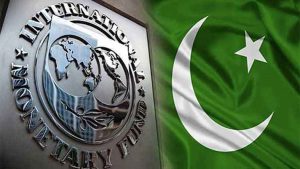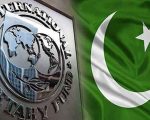KARACHI (Staff Report) – Over a month after leading financial observer Bloomberg said that there was a rising risk of Pakistan’s bankruptcy in 2016 as it may fail to make $50 billion loan payments which are due next year, Resident Mission Chief International Monetary Fund (IMF) Dr Tokhir Mirzoev has ruled out any such possibility.
“There was no chance of Pakistan getting bankrupt in near future because country’s economy was steadily improving and budget deficits have been reduced to a reasonable level,” he said while addressing a seminar titled ‘State of the Economy and Way Forward’ at Karachi University.
Dr Tokhir Mirzoev informed the audience that Pakistani economy was growing at the rate of 4.6 percent which was a bit low as compared to other regional countries, but still the economic development was satisfactory. India was leading the region with 7.5 percent growth rate followed by Bangladesh’s growth rate of 6.8 percent, while China was number three with 6.3 percent growth rate, he added.
The IMF’s Resident Chief said that Pakistan’s GDP growth rate is expected to reach 5.5% by the end of next fiscal year due to better economic policies and reduced subsidies on services. Furthermore the reducing oil prices and low inflation rate has also helped the incumbent government to further improve the country’s economy, he noted.
He, however, stressed that government should put a great focus the control the decreasing exports as exports have decreased by 9 percent in the last year.
“Pakistan’s tax collection net has increased by 11 percent but government needs to raise it to 20 percent to attain economic stability,” he said.
Under the ongoing programme which started in 2013, Pakistan was pledged to be given $6.7 billion to improve its economy and out of which $5.2 billion have been disbursed. These loans from International Monetary Fund (IMF) are mainly used to meet the external debt payments. The scheme will end in 2016.
According to Bloomberg, around 42 per cent outstanding debts of Pakistan are due to mature by the end of 2016 and country’s current economic situation suggests that it would be unable to make these payments to monetary organisations.
Country’s credit swaps, which protect it against non-payment of debts, have jumped up by 56 per cent, placing Pakistan just after Greece, Portugal and Valenzuela in the list of 35 countries.
Mervyn Tang, top economic analyst for Pakistan, also supports Dr Tokhir Mirzoev’s stance, believing that there was not much to worry about for Pakistan in the current scenario because the country had highest foreign reserves and the incoming $46 billion Chinese investment is also a reason to be optimistic.
Despite all these encouraging statements of economists, there were many factors to be worried about for Pakistan, when it comes to implementation of key steps that Pakistan has agreed with IMF to win more loans and ensure payments of debts. These steps include privitisation of key corporations and extension of its tax net.
And as far as the implementation was concerned the Pakistan Muslim League-Nawaz’s government failed to privitise the Pakistan International Airlines (PIA) in January this year, when the company’s employees went on strike and the plan was postponed for another six months.
On the same pattern a very low registration rate was recorded in government’s tax amnesty scheme -which aimed at extension of country’s tax net- as the available figures suggest that only few thousand people agreed to pay property taxes on a promise that they will not be questioned about their non-payments of the past.













